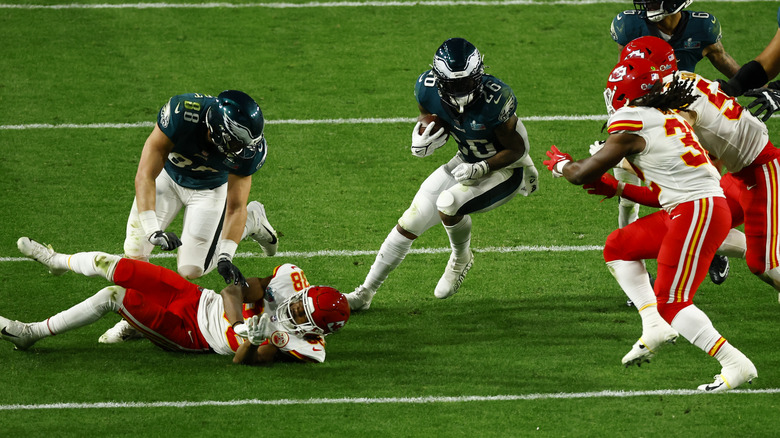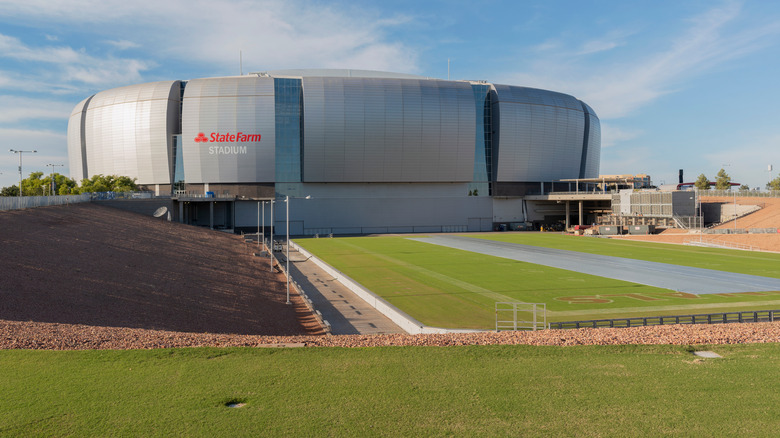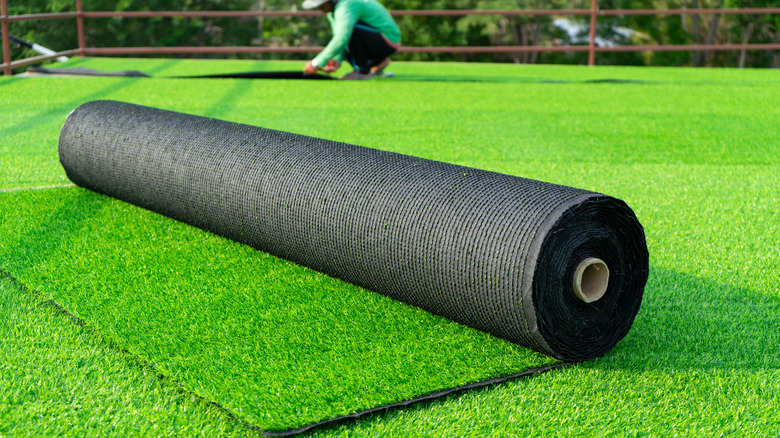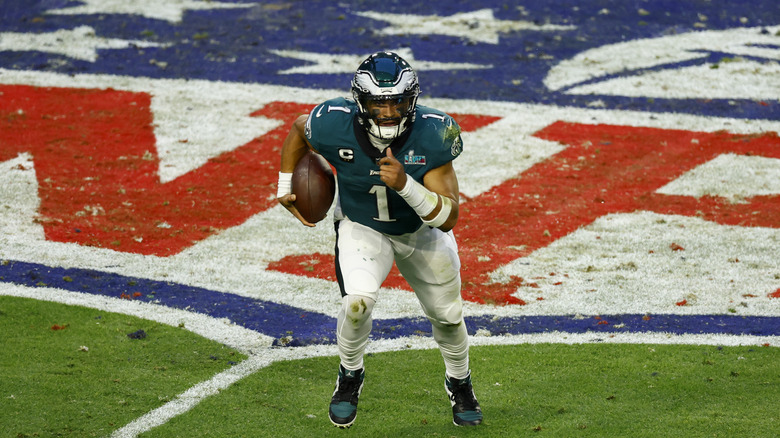The High-Tech 2-Year Story Behind Super Bowl 2023's Disastrous Turf
A special sporting event requires a special surface, and while all eyes may be on the big Super Bowl 2023 commercials, for the players what's more important is the field. For Super Bowl 57, that meant almost two years of preparation for the turf used at State Farm Stadium, butting up against what looked like a disaster on the pitch within the first few minutes. Contrary to many assumptions, the Kansas City Chiefs and Philadelphia Eagles are playing on natural grass, not synthetic, but that hasn't gone according to plan.
The Arizona stadium may not have turned to fake turf to ensure a consistent surface, but that doesn't mean it's low-tech like a suburban lawn. The whole field can be pushed outside of the stadium itself, in fact, so that it can get maximum exposure to the sun. Meanwhile, for the Super Bowl, the National Football League brought in its specialists. "For this one, obviously, we're giving it a little extra care," Nick Pappas, one of the NFL's field surface directors responsible for the natural grass, told the AP. "We've got a lot of groundskeepers here for about a month, putting eyes on it, putting hands on it, working on it all day, every day, getting it ready for game day."
Two years of work for one big game
The growing process began back in May 2021, the NFL says, at a sod farm local to the stadium. It consists of a Bermuda grass base and a ryegrass overseed, the AP reports. More than 600 rolls — each 40 feet in length — were prepared, according to ESPN, and brought to the Arizona Cardinal's field four weeks ago. There, around 30 people helped load it onto the vast tray — 234 feet in width, and 403 feet long — that can roll on steel wheels inside the stadium like a pizza sliding into an oven.
Problem is, for Super Bowl 57, the end result seems half-baked. Players have been slipping and almost falling on the surface. Fans of both teams have been vocal in their criticism of how the natural grass has held up, comparing the field to a Slip 'N Slide. That's bad news for a project that cost more than $800,000, according to Business Insider.
The big turf argument shows no signs of slowing
The "real versus fake" argument is a long-standing one, and this year's Super Bowl seems unlikely to settle it any time soon. Astroturf, the first synthetic grass alternative to be used, was rolled out back in 1965. At the time, it was a fix to the problem that authentic turf wouldn't grow at the then-new Houston Astrodome. More locations followed suit, swayed by the lower cost and easier maintenance; by the 1990s, the NFL says, around half of its stadiums used the fake grass.
While the groundskeepers may have liked it, players weren't so convinced. Though they could run faster on its springier surface, Astroturf's hardness also led to some significant injuries. Eventually, FieldTurf was launched in 1988, with a new cushioning layer and fibers that more accurately mimic real blades of glass.
Even with that softer, more natural construction, not everyone is convinced by artificial turf's qualities. The decision to go natural or fake it is left to each NFL stadium or football team, but research suggests there is clear danger for skipping the grass seed.
A study by the University Hospitals Sports Medicine Institute published in 2019 found that high school athletes — across a variety of sports — were 58% more likely to sustain an injury when they played on artificial turf. The most prevalent injuries were experienced by football players, along with soccer and rugby, with lower and upper extremities along with the torso being particularly at risk.
Paint, not grass, could be the culprit
As well as slips during a break in the third quarter, AZCentral reports, some of the players have also been apparently changing their cleats to try to improve traction. Eagles kicker Jake Elliott was seen falling during one kick. However, one theory suggests that it's not the grass itself that's to blame, but the very final treatment used to get it in shape for the big game. While recent years have seen an uptick in digital imagery, overlaying virtual graphics onto the field for the audience watching at home, the NFL still relies on good old-fashioned painting. It's that paint that some are blaming for the slippery surface.
A lot of players slipping tonight – mostly in painted areas of field (not uncommon on grass). However, those #SuperBowl logos are HUGE & cover almost all grass between hashes from 17-yd line to 33-yd line Looks like much more paint than usual. Potential player safety issue? #NFL
— Scott Pioli (@scottpioli51) February 13, 2023
The theory gained traction on Twitter, where Former Chiefs GM Scott Pioli called out the extent of the painted areas. Lower traction on that paint isn't unusual, he suggested, but highlighted the fact that the Super Bowl logos are sizable this year. "Looks like much more paint than usual," Pioli tweeted. "Potential player safety issue?" The NFL is yet to comment on the field surface.



